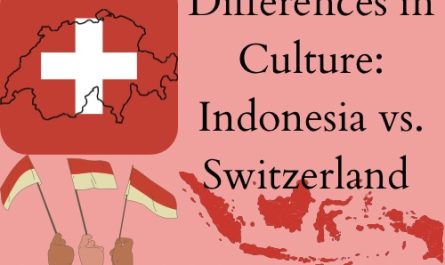The Dark Side
Regrettably, fast fashion has negative consequences for the climate, garment workers and eventually customer wallets. The Nature Reviews Earth & Environment journal in 2020 published Kirsi Niinimäki et al. article The environmental price of fast fashion and widely discussed the ecological damage caused by the fashion industry covering the whole supply chain steps from production to consumption.
In a nutshell, the fashion industry is responsible for 8-10% of all annual carbon emissions worldwide. The fashion and textile industry is still developing, with CO2 emissions projected to rise by 50% by 2030. The apparel industry leads to significant clothing waste being discarded in landfills or incinerated (~92 million tonnes per year). Fast fashion is accountable for ~20% of water pollution worldwide. Chemically contaminated water is discharged into rivers, which reaches the seas and oceans, thus poisoning the marine fauna. According to Kirsi Niinimäki et al. (2020), in Cambodia, the fashion industry caused 60% of water pollution and a high percentage of chemical contamination. Garment production requires extremely high water levels (~ 79 trillion litres of water per year) and energy resources. The catastrophic effects on the Aral Sea are prone to cotton cultivation due to significantly increased demand worldwide.

Fast fashion seeks out ever-cheaper labour. In many of the countries where clothing and garment manufacturing takes place, cheap labour is readily available. According to Unicef, to this day, garment manufacturers, especially in India and Bangladesh, are using child labour by luring them with empty hopes of better pay. It is feared that the economic difficulties caused by COVID-19 will exacerbate the situation. Much of the supply chain necessitates low-skilled labour, and specific jobs are better suited to children and their little hands, such as cotton picking. The fashion production chain is a complex process mechanism, where steps are difficult to track and trace, so most employers easily get away with bad practice.
Garments are prepared, and clothes are sewn at a breakneck pace, very often forgetting about quality. Poorly tailored clothes wear out very quickly, wash up, swell, and look unrepresentative due to poor fabrics. Because of the low price of clothing, consumers often do not try to take care of or repair clothes and instead dispose of them and purchase new ones; thus, allowing the vicious cycle to live and spin at full speed.
Increasing research is revealing that shopping can become addictive. When shopping, our brains are increasingly producing dopamine which is responsible for satisfaction and good mood. Continuous stimulation of dopamine causes a reverse effect when it is reduced. To achieve a good level of pleasure again, you need an ever-increasing stimulus, like an ever-increasing quantity or more expensive items. University of Bergen (UiB) has developed The Bergen Shopping Addiction Scale. Personal qualities are prone to shopping addiction, such as extroverts who can express themselves better with fashion and individuals with neuroticism symptoms who use fashion to relieve stress.
What can YOU do?
Probably reading the unsatisfactory information raises the question of what the consumer can do in this situation? Yes, purchase mindfully! I present a few changes that are very easy to implement but can positively affect the fashion industry’s shift and preserve nature.
- Buy less, buy better quality clothes which will last longer in shape and colour
- Choose eco-friendly fibres (recycles, plant-based, animal-based or semi-synthetic)
- Consider a purchase from sustainable Swiss brands. I have picked a few, in my opinion, gorgeous and affordable! AgentSpécial – specializing in 100% handmade, upcycled, sustainable and vegan fashionable bags décor products. Urbankissed market place with thousands of highly curated fashion-conscious products. Avani – high-quality, timeless pieces from natural fibre such as organic linen, hemp or TENCEL®. Famous FREITAG – handbags, bags, tote bags made from truck tills, car seat belts and discarded bicycle parts.
Key Takeaways
- Fast fashion causes great damage to nature
- Exploits employees in the harmful working environment and long working hours with low wages
- Shopping can be very addictive and affect not only finances but relationships with family and friends, reduce concentration at work
- As a consumer, we can choose to buy less, choose more natural materials and reliable suppliers
I hope this article will encourage all of us to stop, see what we’re wearing, think about where we’re buying, and weigh the pros and cons of fast fashion.
Next, I will cover key elements of sustainable fashion such as organic materials, organic certifications, recycled materials, eco-friendly dyes and many more interesting and useful things to know while shopping. Stay healthy, happy and see you soon!




Very detailed overview, wow, the numbers show that the situation is even worse than I expected.. Thank you for sharing some brand names, AgentSpécial make some really nice-looking bags, would be great to have a bag like that for beach for example 🙂
Hi Sofia, thank you for reading; yes, in this post, I included more figures to reveal the sad reality 🙁
I will go through many more brands in the following posts, but these ones are Swiss, and I think very beautiful and affordable for us students 🙂
I am ordering one from AgentSpécial just can’t decide which one as all of them are adorable! It’s a great gift idea as well.
Completely agree with your key takeaways! Still it is very hard to say “no” to a Zara dress. 🙁 This post reminded me of a documentary I watched last year. It is called “The True Cost” Here is the IMDB link: https://www.imdb.com/title/tt3162938/?ref_=rt_li_tt I recommend watching it. Thanks Simona!
Thank you, Demet for reading and recommending!